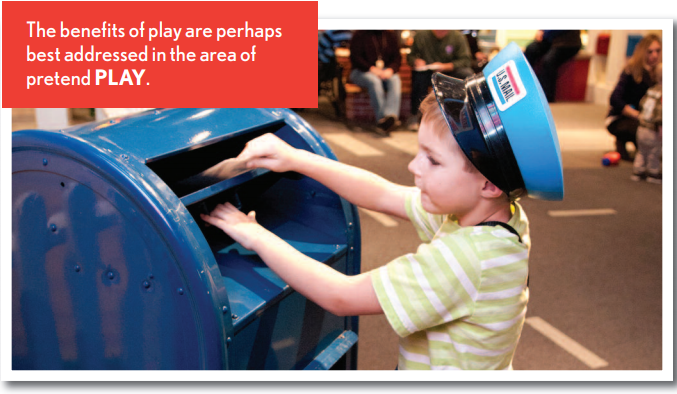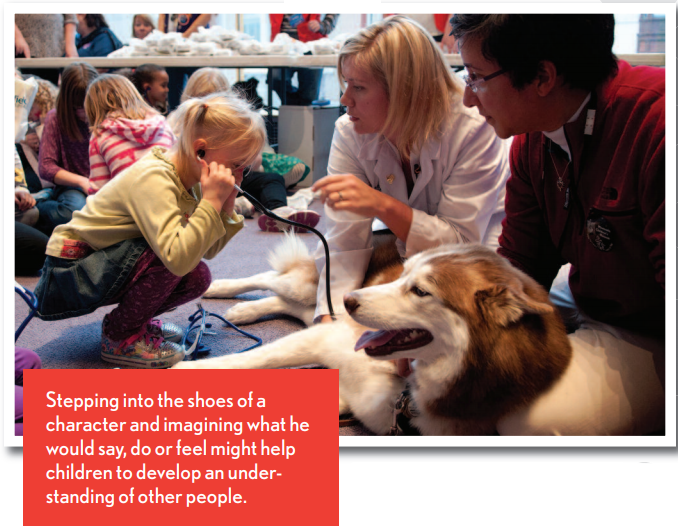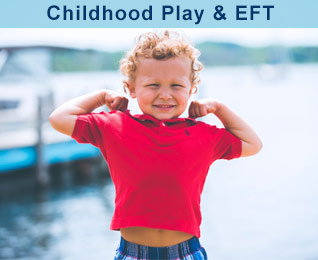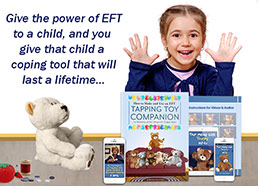The Emotional State of Our Children
Research has revealed a growing mental health crisis in young children and adolescents around the world. This data should cause every society to explore this trend, and all possible interventions, in more depth. The emotional health of children will most certainly affect many generations to come, which is why it is more important than ever that we strive to provide young children with simple coping skills, early in their lives.
Below is just a sampling of child mental illness statistics from research in the United States, the United Kingdom, Australia, Canada, Germany, and India.
In the United States
Over the past 10 years, U.S. health care providers have recognized an increase of anxiety in young people, amounting to a 17% increase in anxiety disorders.
According to the Child Mind Institute, half of all mental illness occurs before the age of 14, and the average age of the onset of behaviors associated with separation anxiety disorder and other specific phobias is first discovered at age 11.
According to a report by the CDC, one in six children, ages 2–8 years old (17.4%) had a diagnosed mental, behavioral, or developmental disorder. It also noted that a diagnosis of depression and anxiety is more common with increased age.
In the United Kingdom
The UK reports that 1 in 8 children have a mental health disorder. In 2017, a report by NHS Digital published England’s first estimates of disorder prevalence in children 2-4 years old. They found that 1 in 18 preschool children were identified with at least one mental disorder.
Behavioral disorders evident in 2.5% of these children included oppositional defiant disorder, sleeping, and feeding disorders.
As children grew older, about one in ten 5-10 year-old children had at least one disorder and about 1 in 30 met criteria for two or more mental disorders.
Behavioral and emotional disorders were the most common among this age group.
In the study, emotional disorders included:
- Anxiety disorders (characterized by fear and worry)
- Depressive disorders (characterized by sadness, loss of interest, energy, low self-esteem, and mania or manic depression)
Globally an estimated 284 million people experienced an anxiety disorder in 2017, making it the most prevalent mental health or neurodevelopmental disorder.
In Australia
In Australia, it’s estimated that around 1 in 7 kids experience mental health issues and they, like the U.S., have determined that about half of all serious mental health issues in adulthood begin before the age of 14.
In another report, from the Australian government, children ages 4 – 11 experience a moderate severity of mental disorders, ranging from 18.5% in females to 20.4% in males.
In Canada
Similarly, in Canada, reports indicate that approximately 1 in 5 children and youth in Ontario have a mental health challenge and about 70% of mental health challenges have their onset in childhood or youth.
In Germany
In Germany, the 2018 BARMER Doctor’s Report showed that between the years 2005 to 2016, alone, the proportion of 18 to 25-year-old individuals with a mental health diagnosis has risen by 38% and in the case of depression by 76%.
While about 28% of young people sought the help of a therapist in cases of mild depression, many who should have did not.
In India
A 2017 report from The World Health Organization (WHO), announced that one in four 13-15 year-olds in India suffered from depression and that suicide was the second highest cause of death in people 15-29 years old.
According to the latest Health Behaviour in School-aged Children survey for the WHO European Region, 29% of 15-year-old girls and 13% of 15-year-old boys in European countries reported “feeling low” more than once a week; also, more than one in ten adolescents were regular weekly drinkers by the age of 15 (9% of girls and 16% of boys).
Similar to the research in other countries, it was noted that half of all mental health problems in adulthood have their onset during or before adolescence.
In 2017, an estimated 264 million people in the world experienced depression.
Troubled Kids in School
Today, more than ever, educators are attempting to contend with challenges of the rising mental health problems in young children and teens.
In some schools, trauma-sensitive teachers offer a “comfort zone” to students who exhibit bouts of anxiety, anger, or rage. They provide a safe space where students can retreat and calm down.
Additionally, some school counselors are talking to students about deep breathing exercises, the power of positive self-talk, healthy nutrition, yoga, sleep, coping strategies, and more.
Alarmingly, a study by the Pew Research Center, conducted in February 2019, reported that 70% of teens stated that anxiety and depression was a “major problem” among their peers.
In 2016, the National College Health Assessment revealed that nearly two-thirds of college students reported “over-whelming anxiety,” a figure that rose 50% over the previous five years.
There is no doubt that children everywhere experience trauma every day. Whether being exposed to violence in the home, fears from war, migration, natural catastrophes, degradation or neglect; one point is consistently evident.
Emotional disturbances, that can deepen and expand over time begin in early childhood, and it seems to be a pattern that crosses wide geographical boundaries.

Certainly, family, community, economic, and health care related factors are associated with research regarding the emotional state of children. Other factors, such as bullying, negative peer pressure, and high demands to excel can also impact the self-esteem of vulnerable young children, teens, and young adults.
Given the significant rise in mental health issues around the world for children and teens, it seems reasonable that teaching coping strategies to children, early in life, might very well benefit them as they grow and mature.
Enter the Emotional Freedom Technique
Around the world, the Emotional Freedom Technique (EFT), also known as EFT Tapping or Meridian Tapping, is gaining popularity in schools, thanks to programs like Tapping in the Classroom.
But, why wait until children are in grade school, middle school, high school, or later to teach them valuable coping skills?
Why place the responsibility of dealing with troubled children onto teachers and school systems?
What if societies could teach children, early in life, how to curb a build-up of negativity as they approach and move through their school years?
What if we could give them a simple tool that can quickly bring them to a place of inner calmness whenever they need it most?
How Can Very Young Children Be Taught EFT?
It is well known that a child’s early development of self-esteem, self-control, and personality depends greatly upon interactions from within his or her every-day environment; through direct and extended family members and other regular caregivers.
Given the natural occurrence and process of play in early childhood development, one simple way to teach EFT to young children would be to integrate it through play.
The Nature of Childhood Play
At an age when communication skills are not yet developed and emotional reaction is high, situation-play (make believe play) can help children grasp concepts on their level. They can relate better to expression and emotion than to a vocabulary that they can’t yet master, nor understand completely.
A lack of communication skills, limited cognitive skills, and impulsive emotional reaction can make it difficult for a young child to understand why we should share, or the importance of telling the truth, or why we don’t hurt others.
Carefree, creative dramatic play promotes cognitive development and helps children learn how to share, communicate, and cooperate with each other. Through role playing children can also learn how to develop empathy for others.
Toddlers begin to enjoy make-believe play just before their second birthdays. You may see this imitation emerging as they trod around in daddy’s shoes, or they may use play food, appliances and utensils, child-sized play furniture, simple dress-up clothes and dolls.
Often, first “pretending” experiences are with a favorite stuffed animal or doll. Children will act out a whole range of emotions when playing pretend, offering sympathy for a stuffed “doggie” that is hurt or for a doll that fell off a chair. They may scold a puppet or doll for being naughty or will tell a doll how proud they are because “she” used the potty.
In Piaget’s theory of development, children two to four years of age cannot yet manipulate and transform information in a logical way. However, they can think in images and symbols.
Among children ages 3-5, one of the most common spontaneous games is social pretend play–also called fantasy play, sociodramatic play, or role play.
Children may develop imaginary friends or role-play with others. As they develop, their play becomes more social and they assign roles to others. The type of symbolic play in which children engage is connected with their level of creativity and ability to connect with others.
During this time, children will begin to ask questions, as primitive reasoning emerges. They can also direct full attention to the specifics of an increasing array of situations.

The Value of Imaginative Play
Through dramatic play, children learn to overcome fear, gain perspective, and develop originality, initiative, and responsibility. It allows children to “try out life,” to imitate activities that interest them, to understand new experiences and see how they “feel.”
Children who are active in pretend play are usually more joyful and cooperative, more willing to share and take turns, and have larger vocabularies than children who are less imaginative.
Imaginative play helps youngsters to concentrate, to be attentive, empathetic, and to use self-control.
This type of play can enhance young children’s’ intellectual, social, emotional, and creative development, while they learn new and more complex ways to express themselves.
By giving children opportunities to engage in imaginative play, we allow them to become conductors of enlightenment, expression, and understanding.

EFT and Role-Playing with Children
During the early period of development, a child’s thinking is extremely self-centered. Children see the world only from their own perspective. They focus on themselves and have difficulty understanding other points of view.
However, when children pretend with caregivers, the exchanges are more complex, more elaborated, and also more extended than when they pretend by themselves. Children will also often use ideas that parents or caregivers suggested during interactive pretend play sessions when they pretend play on their own.
During the toddler and pre-school years, the propensity for imaginative play and role-playing is great. This type of play is a natural developmental process, which makes this stage of development an ideal time to begin introducing EFT Tapping.
In psychotherapy, play therapy is a psycho-dynamic technique that is typically used with children. It commonly involves using stuffed animals or dolls that enables children to play out their traumas, hopes, and dreams.
By implementing EFT into playing with a child, he or she can transfer a troubling situation onto the toy, while using some simple tapping, to open a process through which calmness, contemplation, and healing can begin.
How to Teach EFT to Young Children
The first step:
- Learn and use EFT – It’s important that you gain a basic understanding of EFT; use it for some minor personal situations to become comfortable using it.
The second step:
- Teach EFT by example – Do EFT in the presence of a young child; during situations that make you angry, anxious, or sad. Children are keen to pick up on what parents and caregivers do and on their emotions.
Make an EFT Tapping Toy:
- Just as stuffed animals and toys are used by child therapists, a “tapping toy” can be an easy, playful way in which adults can teach EFT to young children.
 (Learn about making and using an EFT tapping toy.)
(Learn about making and using an EFT tapping toy.)
In Conclusion
Whether it’s by a parent, other family member, child caregiver, in schools, or through mental health intervention, teaching young children coping strategies with the Emotional Freedom Technique (EFT) may help pave for them, and those learning and teaching it, a future that holds less anxiousness and depression and more empathy, greater emotional independence, strong self-esteem, more happiness and, ultimately, a better quality of life.
By Lynn M. Johnson
Featured image of little blonde boy by:
Photos related to play from THE POWER OF PLAY – A Research Summary on Play and Learning by Dr. Rachel E. White for the Minnesota Children’s Museum (Smart Play)






